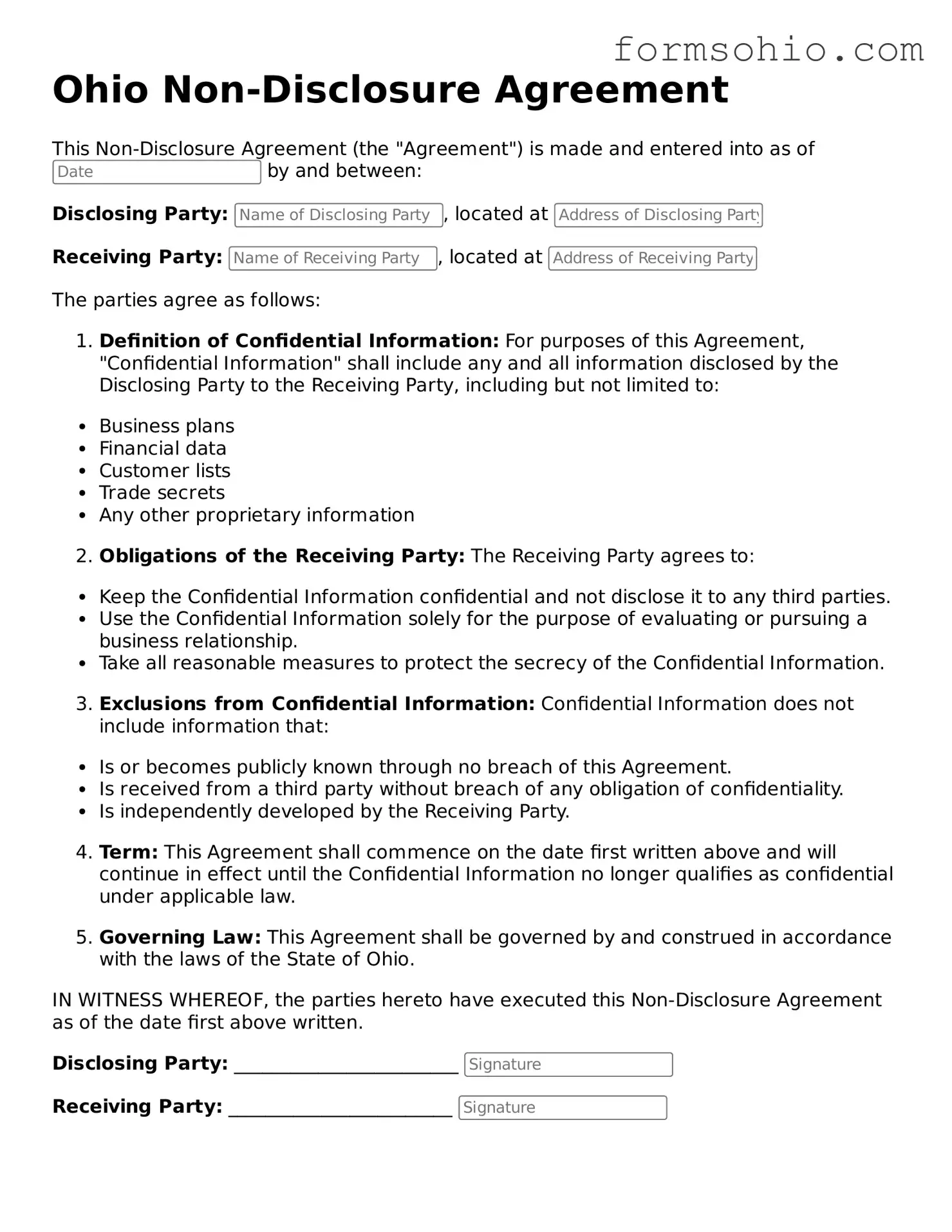When filling out the Ohio Non-disclosure Agreement (NDA) form, individuals often overlook critical details that can lead to complications down the line. One common mistake is failing to clearly define the confidential information. Vague language can result in misunderstandings about what is protected under the agreement. It’s essential to specify exactly what constitutes confidential information to avoid ambiguity.
Another frequent error is not identifying the parties involved correctly. Each party's legal name should be used, rather than informal names or abbreviations. This ensures that all parties are clearly recognized and held accountable under the terms of the NDA.
People sometimes neglect to include the duration of the confidentiality obligation. The NDA should specify how long the information must remain confidential. Without this detail, there may be uncertainty about when the obligations end, which can lead to disputes.
Some individuals make the mistake of not considering the scope of the agreement. It’s crucial to outline whether the NDA applies only to specific projects or if it covers all interactions between the parties. A well-defined scope helps prevent future misunderstandings.
Additionally, many overlook the importance of including the consequences of breaching the NDA. Clearly stating the repercussions can deter potential violations and provide a framework for resolving issues if they arise.
Another common pitfall is failing to review the entire document before signing. It’s vital to read through the NDA thoroughly to ensure all terms are understood and agreed upon. Rushing through this step can lead to unintended commitments or overlooked clauses.
People also often forget to include any necessary signatures. An NDA is not enforceable without the appropriate signatures from all parties involved. This step is essential for validating the agreement.
Some individuals mistakenly believe that verbal agreements are sufficient. However, an NDA should always be in writing to provide clear evidence of the terms agreed upon. Relying on verbal agreements can lead to confusion and disputes later.
Another error is not consulting with a legal professional before finalizing the NDA. Seeking legal advice can help ensure that the agreement is comprehensive and tailored to specific needs, reducing the risk of future issues.
Finally, people often forget to keep a copy of the signed NDA. It’s important to retain a copy for personal records, as it serves as a reference point for both parties. Without a copy, it may be difficult to enforce the terms of the agreement later on.
